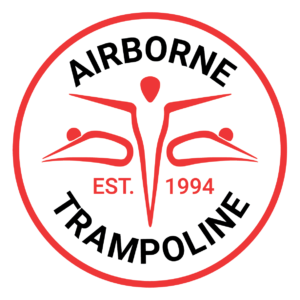Trampoline Flips – The Importance Of Instruction
Trampoline flips. Everyone wants to do one, but do the majority of jumpers know how? Sadly, no. This puts many jumpers at risk of trampoline related injuries specifically involving flips. How can these injuries be avoided, and what kind of training is involved to learn a flip safely. Read on as this article is aimed to outline the difficulties involved in flipping on a trampoline. Lets not forget, as it may look easy, the details of a flip show how very important it is to have a professional trampoline instructor teach proper flipping techniques and progressions before attempting one on any trampoline including backyard, trampoline park, or professional Olympic trampoline.
What are trampoline flips? Some call it an inversion, some call it an inverted three sixty. Simply put, a trampoline flip is anything which involves a persons feet rotating over their head. This can involve “taking off” from feet, doggie drop, seat drop, back drop, and even stomach drop. It doesn’t even limit you to what body part you land on, but simply that the correct rotation has taken place. Flipping has long been the desire of many jumpers on trampolines, diving boards, and spring boards. Flips come with many different names including front, back, barani, rudy, arabian, back pullover, porpoise and much more. In summary, a flip can be just about anything, as long as your feet end up going over your head. So whats the big deal? Flips have obviously been around long enough to be perfected and improvised in many different ways. Why cant we all just flip an be happy? Quite simply, anything that takes your feet over your head can put you at serious risk.
Obviously we’ve stressed that there is a lot more to learning how to flip than simply “trying it”. So lets get into some of the basic of flipping and how Airborne Trampoline Woodbridge instructors begin teaching someone how. It all begins with progressions. Progressions are literal baby steps towards the ultimate goal of performing safe trampoline flips. Airborne Trampoline instructors usually begin with the most basic of progressions which is the “Doggie Drop Front Flip”. This skill is basically a front roll from the hands and knees (doggie drop). This progresses the student to become comfortable with rotation, and begins teaching the brain how to maintain control during this odd maneuver. This progression is usually performed from stationary position without any bounce whatsoever. Only once the student is comfortable with the rotations involved does the trampoline instructor begin to introduce small, controlled bounces to lead into the flip. Learning a flip from such an easy progression ensures that the students do not under rotate during their attempts. Under rotation can be a very dangerous thing and involves exactly what it sounds like. The student does not rotate all the way around to their feet, in some cases, landing on their head. So what happens after a trampoline student has learned the “doggie drop front flip”? Stay tuned next week for part 2 of this article to find out. Or, if you’ve become interested in learning trampoline flips yourself, contact an Airborne Trampoline location to find out about Airborne’s Recreational Trampoline Classes.
____________________________________________
This article was created by Steve M, a Gymnastics Canada and N.C.C.P. Trained & Certified Trampoline Coach at Airborne Trampoline Club in Woodbridge.
And yes, he knows how to perform and teach trampoline flips.
For more information on Airborne’s Trampoline and Gymnastics Trampoline Programs, contact any Airborne location by jumping over to www.airbornetrampoline.ca
Airborne Trampoline
Check Out ALL of Airborne’s Amazing Locations.
Airborne Trampoline North: Newmarket
Airborne Trampoline Club: Woodbridge
Airborne Trampoline Centre: Mississauga
Airborne Trampoline KW: Cambridge.
Airborne is a proud member of Gymnastics Ontario.


